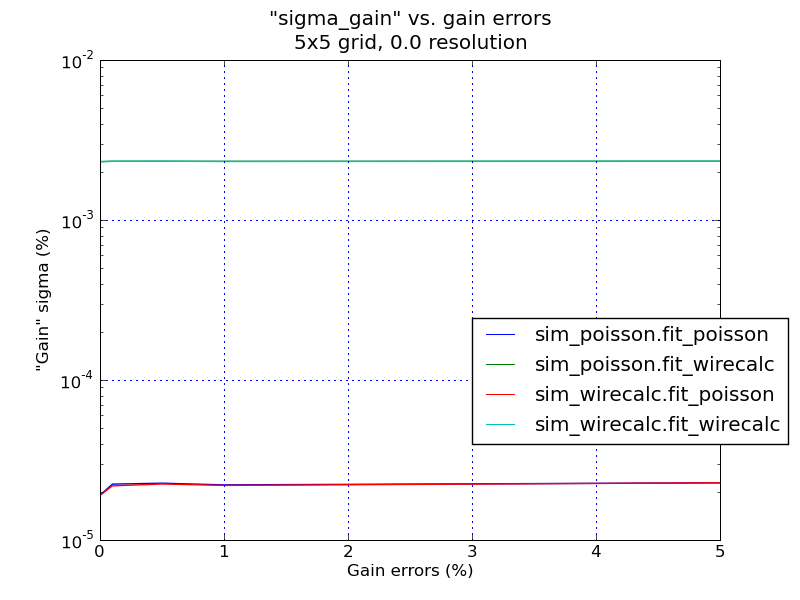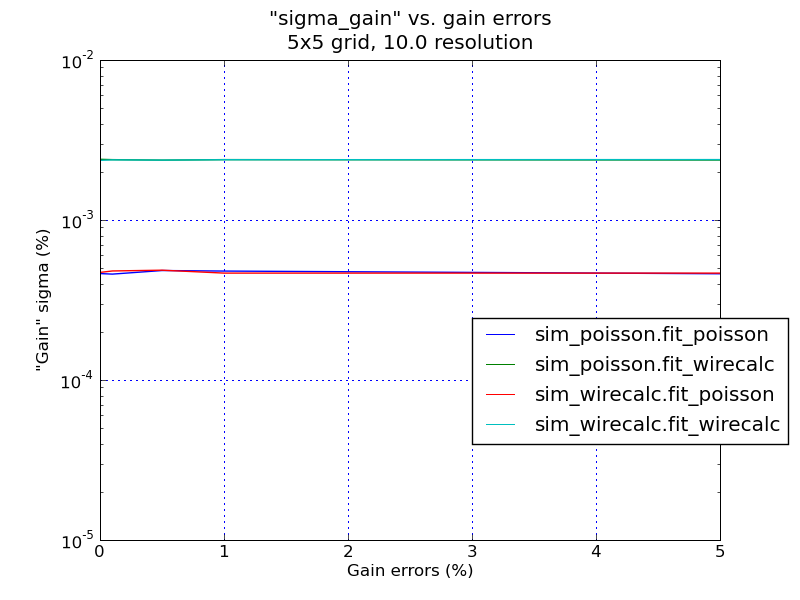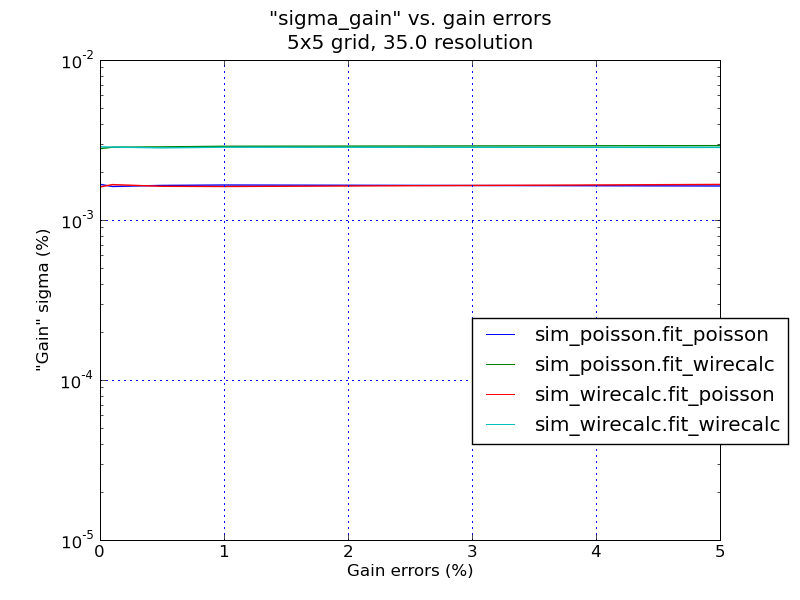


Nonlin_bpm is a routine that converts four button signals from a BPM into a coordinate (x,y) and intensity using an interpolation grid. We have reason to believe our present interpolation grid for nonlin_bpm is no longer accurate enough for our needs. In particular, for gain mapping we believe we require a "quality of fit" of roughly 0.5%. (See vertical dispersion tolerance studies)
The present nonlin_bpm interpolation grid is based on solving the Poisson equation on the specific potential of the beam pipe. A second method for modeling button response is to simulate the beam pipe as a series of wires, and the beam as another wire carrying a current. The beam pipe responds to the presence of the beam "wire", and we can simply sum the response of the wires that overlap where the buttons would be. This is referred to as the "wire_calc" method.
To understand the dependence of the quality of fit on inaccuracies of the interpolation grid, we simulate gain mapping data using one of the two grids. We then fit the gain map data using the other grid, and compare to when we fit using the same grid that was used to generate the data. Resolution is introduced as an additive uncertainty in each button signal, and button pedistals (offsets) were also fit.
We find that independent of which grid is used to generate the data, fitting with the Poisson (old) grid always results in a better quality of fit than fitting with the "wire_calc" (new) grid. It is not yet understood as to why this would happen. One possibility is that the Poisson interpolation grid is calculated to six decimals, whereas the wire_calc grid is only calculated to four. A new wire_calc grid is presently being recalculated to six decimals.